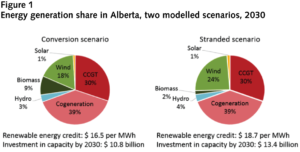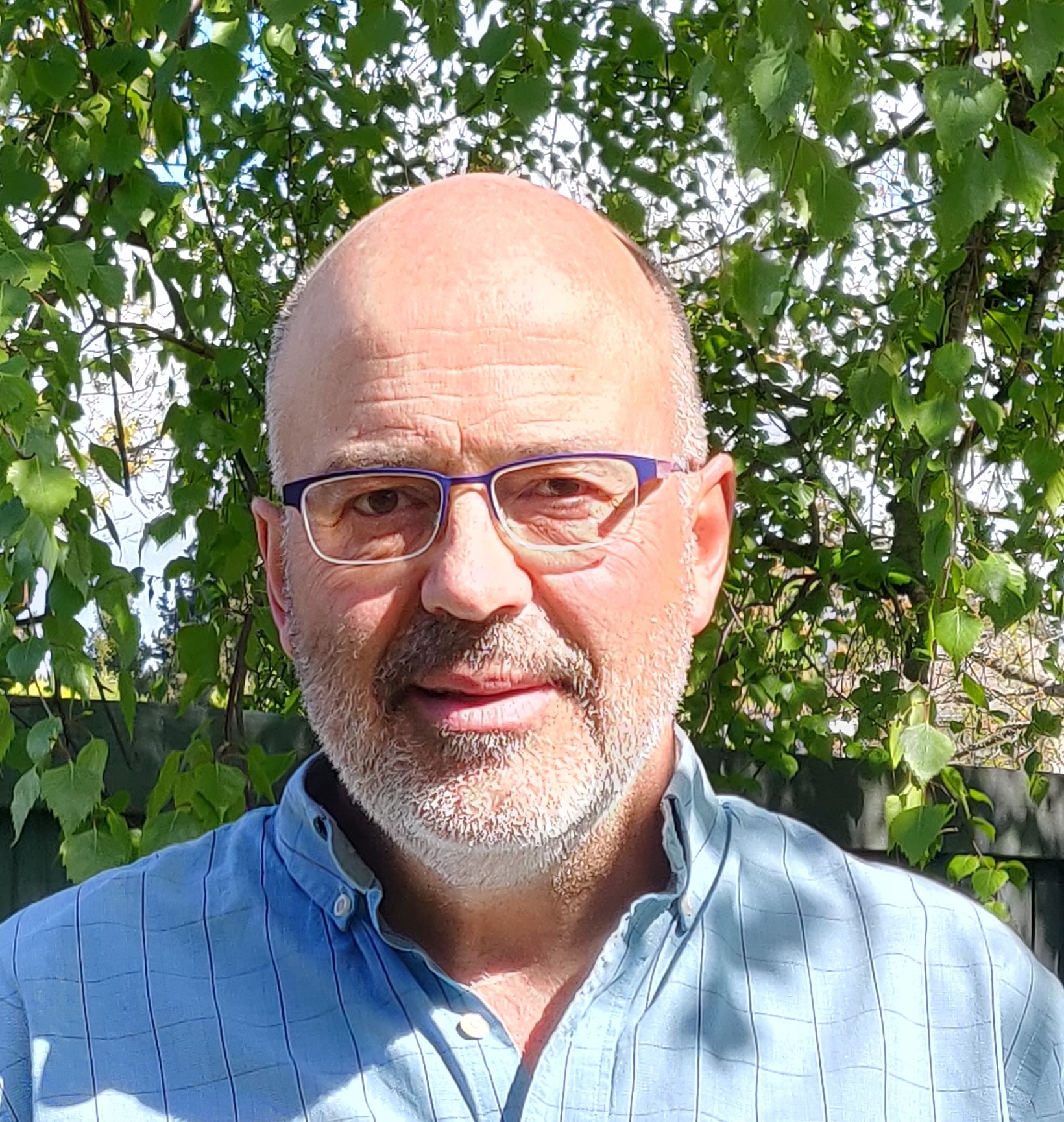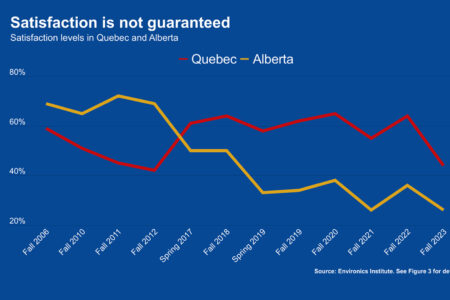
The Alberta power system is set for radical transformation between now and 2030. According to the Climate Leadership Plan, the province will end all coal-fired power generation and get 30 percent of its energy from renewable sources by this date. To drive this transition, the government is considering incentives such as renewable energy credits (RECs) for renewable generators, and it will penalize heavy emitters of carbon dioxide by increasing the province’s carbon price from the current $20 a tonne to $30 in 2018.
Our analysis shows that converting stranded coal-burning plants to biomass fuel could help the government meet its target at lower cost.
Coal is currently the source of 51 percent of the electricity generated in the province . Natural gas accounts for 39 percent and the remaining 10 percent comes from renewable sources. According to the Alberta Electric System Operator, Alberta’s total electricity consumption is projected to increase by as much as 30 percent by 2030. To meet the new renewable targets, cover the gap left by the coal phase-out and keep pace with growing demand, a significant amount of new low-carbon generating capacity must be installed between now and 2030.
Wind and solar resources are expected to provide the bulk of this additional energy, but managing intermittency with these options incurs significant costs which can increase as their use grows. Biomass, which today accounts for only 3 percent of power generation in the province, could enable Alberta to fuel the transition to renewable power while providing flexibility and firm capacity to maintain system reliability.
British Columbia and Alberta are home to large forestry industries, which generate enough forest residue to fill over 7,000 Olympic sized swimming pools every year. As this residue has limited merchant value, most is either burned to avoid forest fires or left on site to decay. However, a portion of this residue could be used to fuel coal-fired plants in Alberta that will otherwise be forced into early retirement by 2030. Although some modifications are necessary for these plants to handle biomass, the costs of these modifications are relatively low compared with the costs of building new generating units.
We have examined the potential for converting coal-fired plants to run on biomass from forest residue, using a long-term energy modelling software. The model takes into account the current Alberta generation facilities, the phase-out of coal by 2030 and the proposed increase in carbon prices in the province. Options for additional generation include natural gas combined cycle (CCGT), natural gas open cycle (OCGT), cogeneration, geothermal, wind, solar, hydro and conversion of coal-fired units to burn biomass. A geographic information system (GIS) model is also used to account for the costs and emissions of transporting the fuel. The model assumes that raw forest biomass is converted to wood pellets before it is delivered to the generating stations. The analysis optimizes the system for lowest cost subject to meeting the goal of 30 percent of the province’s energy coming from renewable sources by 2030.
Figure 1 shows the optimal energy mix to achieve the 2030 renewable energy penetration goals for two modelled scenarios: on the left, the Conversion scenario where coal to biomass conversion is an option; on the right, the Stranded scenario shows the result if conversion of coal plants to biomass is not permitted. In the Conversion scenario, two coal-fired generating units, with 900 megawatts (MW) of combined capacity, are converted from coal to biomass. These two units would account for roughly 7 percent of the electricity generation in the province in 2030 (adding to the 2 percent already produced from other biomass sources by this date). While this represents a relatively small share of total generation, it is a significant step toward the goal of 30 percent of energy coming from renewables.
The conversion of some stranded coal units to biomass could lead to lower expenditures on renewable energy credit payments by the government. The model shows that a credit expenditure of $18.7 per megawatt hour (MWh) to all renewable energy generators would be necessary to achieve the 30 percent target in the Stranded scenario, but in the Conversion scenario, this value would drop to $16.5 per MWh. This difference would be equivalent to a drop of $600 million in REC payments from the government, from 2016 to 2030.
Also shown in figure 1 is the displacement of wind energy due to the introduction of bioenergy. The share of wind power drops from 24 percent in the Stranded scenario to only 18 percent in the Conversion scenario. Because wind power is intermittent, significantly more generating capacity and backup capacity would be required to produce this 6 percent segment of the province’s energy, compared with the 900 MW from the coal-fired plants converted to biomass. As a result, an investment of $13.4 billion in new capacity for wind would be required between 2010 and 2030 to meet demand and maintain system reliability in the Stranded scenario, $2.6 billion more than in the Conversion scenario.
If the province of Alberta is to achieve a 30 percent renewable energy penetration in the power system by 2030, biomass is an option that should be considered as an alternative to reliance on only wind and solar power. While significant investments in the power system are likely to occur in the coming years regardless of the adoption of biomass fuel, its use may allow for substantial cost savings.
More information on the Alberta and British Columbia power systems and similar research projects can be found on the web site of the 2060 Project and on the web site of the Pacific Institute for Climate Solutions.
Photo: Shutterstock.com
Do you have something to say about the article you just read? Be part of the Policy Options discussion, and send in your own submission. Here is a link on how to do it. | Souhaitez-vous réagir à cet article ? Joignez-vous aux débats d’Options politiques et soumettez-nous votre texte en suivant ces directives.














